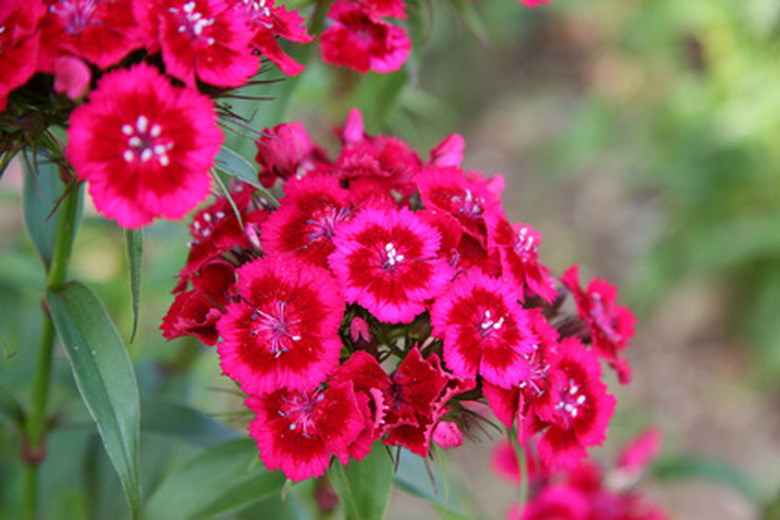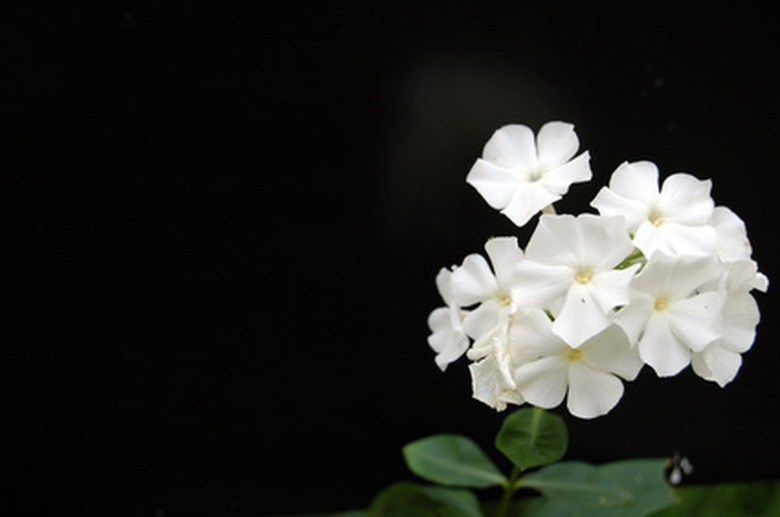Insects On Garden Phlox
Phlox paniculata, or common garden phlox, is an herbaceous perennial, or plant that grows back from the root every spring. There are numerous cultivars that vary in height, bloom time, flower color and other characteristics. They are most known for their bright colored flowers that have a sweet fragrance. However, they do suffer from diseases and insect problems in the garden setting.
About Phlox
Garden phlox are United States Department of Agriculture (USDA) hardy in Zones 3 to 8. They prefer full sun and bloom in late summer. They range in height from 2 to 4 feet. The blooms grow in clusters and have a light, sweet smell. They prefer well-drained soil and need to be watered thoroughly during dry spells. Phlox need to be fertilized in early spring and again in late fall with a low-nitrogen fertilizer.
- Phlox paniculata, or common garden phlox, is an herbaceous perennial, or plant that grows back from the root every spring.
- There are numerous cultivars that vary in height, bloom time, flower color and other characteristics.
Garden Uses
Garden placement depends on the variety. Shorter types make great mid-border flowers surrounded by contrasting colors. Peonies look good in front of phlox. Taller varieties look best towards the back so as not to block other plants. Phlox need good spacing and air circulation, otherwise the leaves can turn brown or become afflicted with powdery mildew.
Phlox Insects
The spider mite, from the family Tetranychidaeis, poses the biggest pest problem for phlox. Although not considered true insects but rather arachnids, like spiders, they damage phlox. The most significant spider mite is the twospotted spider mite (Tetranychus urticae).
- Garden placement depends on the variety.
- Phlox need good spacing and air circulation, otherwise the leaves can turn brown or become afflicted with powdery mildew.
The phlox plant bug (Lopidea davisi) is a reddish orange and black bug that feeds predominantly on phlox.
The tarnished plant bug (Lygus lineolaris) and four-lined plant bug (Poecilocapsus lineatus) are two of the most damaging insects on perennials.
Insect Symptoms
Spider mites cause damage with their piecing mouth parts that take out liquids from the leaves. This causes the leaves to initially yellow, dry up and turn brown. Spider mites thrive in hot weather and are worse in dry, hot summers.
The phlox bug's feeding causes white or light green spots on the leaves and buds. The leaves will eventually turn brown, dry out and drop off. The symptoms can be so severe that plant growth may become impeded and die. The phlox bug lives in the egg stage through winter on dead stems. They appear in spring and then hatch another batch that appears in late summer.
- The phlox plant bug (Lopidea davisi) is a reddish orange and black bug that feeds predominantly on phlox.
- The phlox bug's feeding causes white or light green spots on the leaves and buds.
The tarnished plant bug damage affects leaves and removes the buds off the plants. This damage will lead to shorter and bushier plants. Stems can also break in the affected areas. The adult bugs survive over winter and begin attacking in the spring.
The four-lined plant bug sucks the juice out of leaves and causes small black areas. The black holes are dead tissue that drops off, leaving holes in the leaves. The adults prefer the top part of the leaves, thus causing injury there first.
- The tarnished plant bug damage affects leaves and removes the buds off the plants.
- The adults prefer the top part of the leaves, thus causing injury there first.
Prevention and Control
Spider mites can be controlled with an insecticidal soap, or soap and water mixture. The spray is somewhat effective if used in the early stages of the infestation. If the infestation is severe, Kelthane, available at most local garden centers, can be used. Kelthane should be used early in the day and, as with all insecticides, read labels carefully and consult with a garden center before application.
The phlox bug can be controlled with proper care before infestation is severe. Prune and throw away infested leaves and stems. Remove plant litter in the fall. Use insecticidal soaps on an entire leaf. The last resort is chemical control. Pyrethrins, permethrin or acephate/orthene are products that can be used.
- Spider mites can be controlled with an insecticidal soap, or soap and water mixture.
- Pyrethrins, permethrin or acephate/orthene are products that can be used.
The tarnished and four-lined bugs can be controlled with natural predators. As a preventative measure, clean up leaf litter to prevent the bugs from staying over winter. Insecticidal soaps can be used. If completely necessary, chemical insecticides such as malathion can be used.

